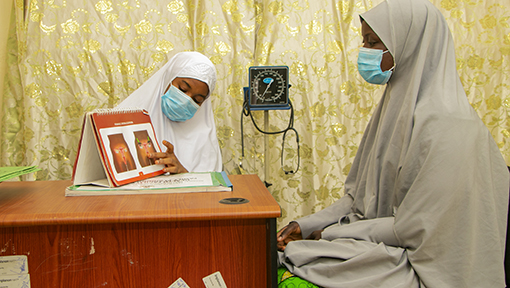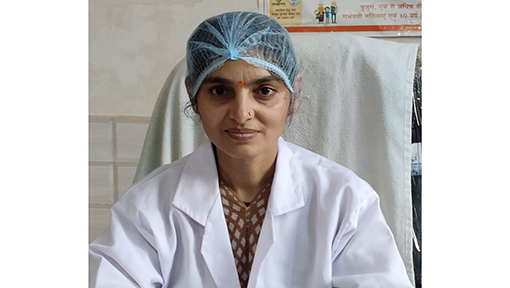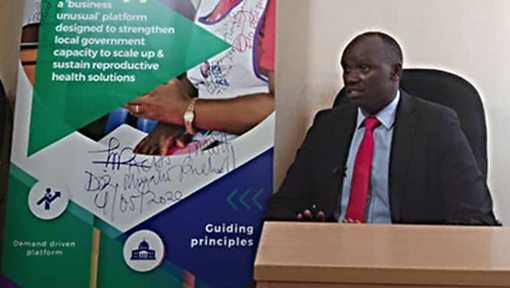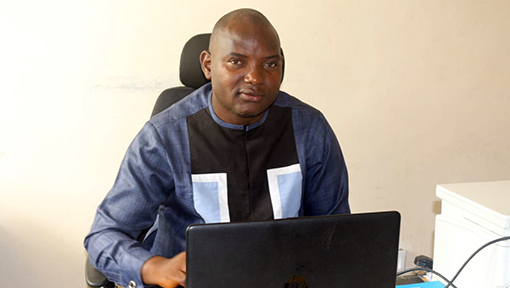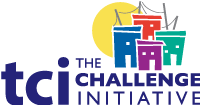The 2BY2 Matrix Helps ASHAs and ANMs Aligarh, India, Prioritize Family Planning Clients
Contributors: Umam Farooq and Mamta Behera
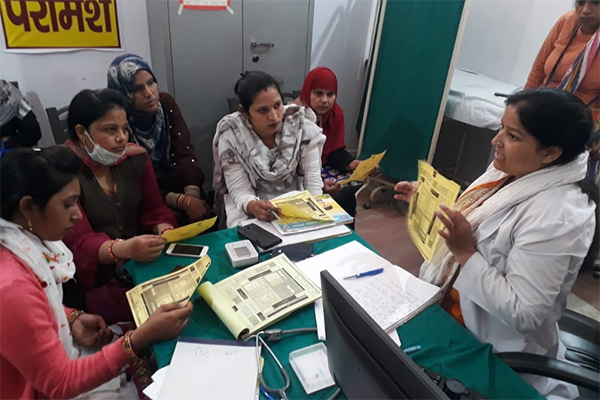
Dr. Lalit Kumar (right) coaching ASHAs in Aligarh on the 2BY2 matrix.
The Challenge Initiative for Healthy Cities (TCIHC) has been improving the family planning knowledge and skills of urban Accredited Social Health Activists (ASHAs) since it began supporting local governments across three states in India in 2017. To further strengthen the health system and support urban ASHAs and Auxiliary Nurse Midwives (ANMs) – who supervise ASHAs – TCIHC introduced its “2BY2” matrix to help prioritize potential family planning clients as well as meet their other health needs more efficiently. In a recent interview, Dr. Lalit Kumar, the Joint Director of Health and Family Welfare in Aligarh, explained the impact the 2BY2 matrix is having.
Urban ASHAs in Aligarh have been successfully coached through the Lead, Assist and Observe (LAO) [coaching] model of TCIHC. The program’s MIS [management information system] data indicate that the LAO model is improving ASHA’s knowledge of family planning, attitude towards counseling skills and require minimal support in terms of planning and monitoring. … TCIHC team had, hence, decided to move to the next step with devising a tool, which helps ‘prioritize.’ TCIHC has helped us understand how significant it is to track eligible couples for family planning. This 2BY2 matrix has given us guidance on how to increase efficiency of ASHA, without investing additional resources and increase their reach not only for family planning but for other health areas, like routine immunization also.”
The Aligarh Division government was so impressed after TCIHC introduced the 2BY2 matrix in November 2019 that it has now diffused it to non-TCIHC supported cities in the division.
The tool amazed us! It aggregated users and non-users of family planning by ASHA, which in turn, supports understanding of family planning uptake by ANM. Aggregation by age/use at the ANM level establishes service uptake for each of the urban primary health centre (UPHC). The tool signals UPHCs that are performing well in terms of family planning uptake and UPHCs that have a large population of the target audience with unmet need. We could draw out a priority list of ASHAs and ANMs who are performers and those who require mentoring and monitoring. We realized that such a customized tool that drives a ‘culture of prioritization’ has never been introduced before. Our AD (Additional Director) was impressed so much so that she wanted to replicate this in three non-TCIHC cities, namely Kasganj, Etah and Hathras of Aligarh division. She issued a circular to District Magistrate / Chief Medical Officers (CMOs) of those districts to implement this immediately. Following this, I worked in collaboration with TCIHC City Manager to rollout the 2BY2 matrix in the three selected non-TCIHC cities.”
To date, 396 ASHAs and 85 ANMs have been oriented on the 2BY2 tool to help identify eligible family planning clients and/or areas or populations requiring more efforts for voluntary family planning adoption.
When on a visit to Pala Sahibabad UPHC, I observed a 2BY2 matrix in an ANM’s hand and, at that time, she told me that, ‘2BY2 is an amazing tool. Now, I do not sift through various registers of ASHAs as this matrix provides clear information on which ASHA requires more support.’ “
The 2BY2 matrix has been introduced across all 31 TCIHC-support cities and has already shown great success in instituting a culture of prioritization and data for decision-making, using available data sources and health system structures, which helps ensure sustainability.


